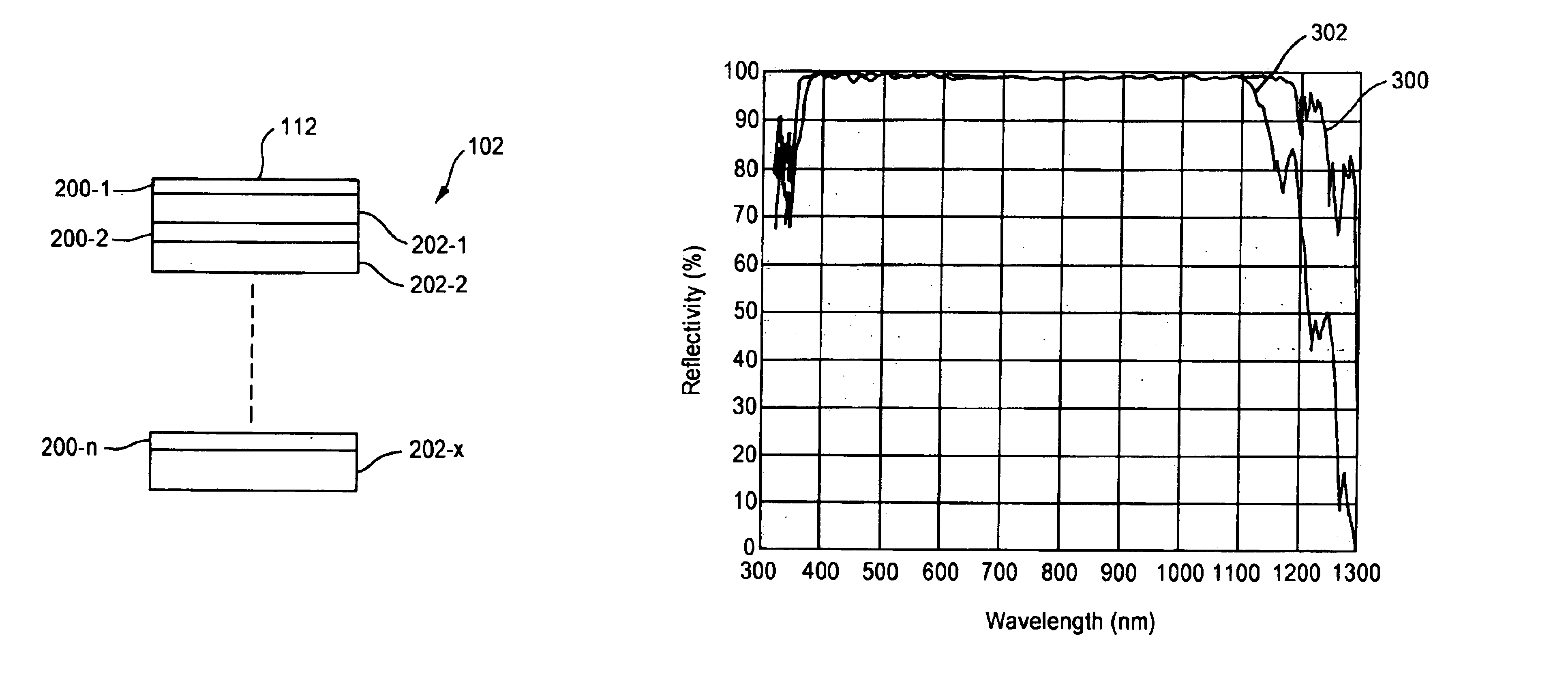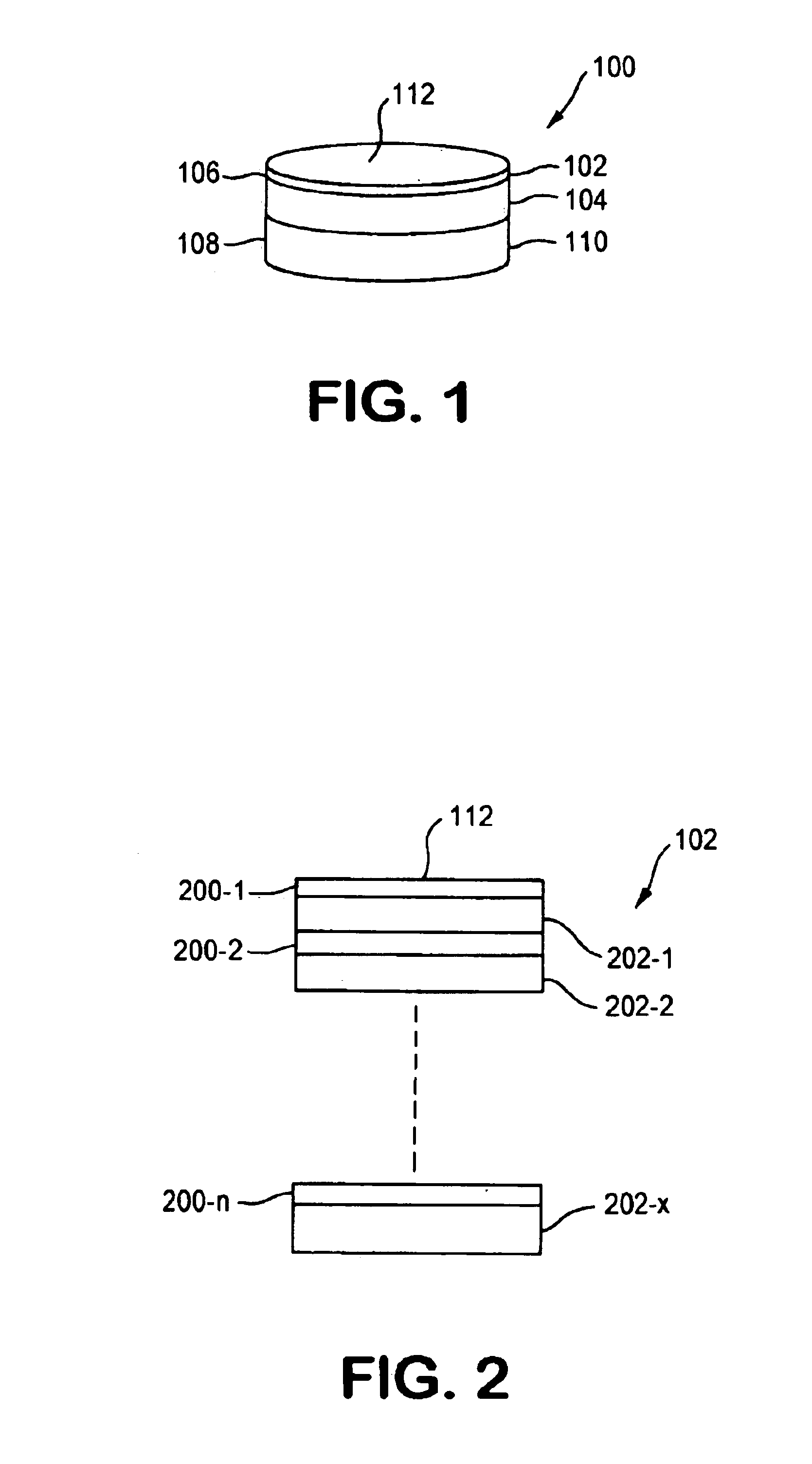Extended bandwidth mirror
a mirror and bandwidth technology, applied in the field of thin film mirrors, can solve the problems of not having enough broadband reflectance zones to allow connection with the wavelength range of laser wavelengths used in certain optical systems, and not being able to provide a single dielectric mirror. sensitivity of such a system is severely limited
- Summary
- Abstract
- Description
- Claims
- Application Information
AI Technical Summary
Benefits of technology
Problems solved by technology
Method used
Image
Examples
Embodiment Construction
[0023]The present invention will be described herein in connection with various exemplary embodiments thereof. Those skilled in the art will recognize that the features and advantages of the present invention may be implemented in a variety of configurations. It is to be understood, therefore, that the embodiments described herein are presented by way of illustration, not of limitation.
[0024]Conventional reflecting mirrors have been configured as dielectric mirrors having high reflectivity over a relatively narrow (e.g. less than or equal to 400 nm) band of wavelengths associated only with, for example, one operating frequency of the laser 100, or associated with only one laser system. An Nd: YAG laser, for example, has fundamental and harmonic frequencies of 1064 nm, 532 nm and 355 nm. No known conventional dielectric mirror provides high reflectivity for all polarization states over the range of 355 nm to 1064 nm, which covers the fundamental and harmonic frequencies of an Nd:YAG ...
PUM
 Login to View More
Login to View More Abstract
Description
Claims
Application Information
 Login to View More
Login to View More - R&D
- Intellectual Property
- Life Sciences
- Materials
- Tech Scout
- Unparalleled Data Quality
- Higher Quality Content
- 60% Fewer Hallucinations
Browse by: Latest US Patents, China's latest patents, Technical Efficacy Thesaurus, Application Domain, Technology Topic, Popular Technical Reports.
© 2025 PatSnap. All rights reserved.Legal|Privacy policy|Modern Slavery Act Transparency Statement|Sitemap|About US| Contact US: help@patsnap.com



